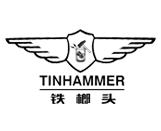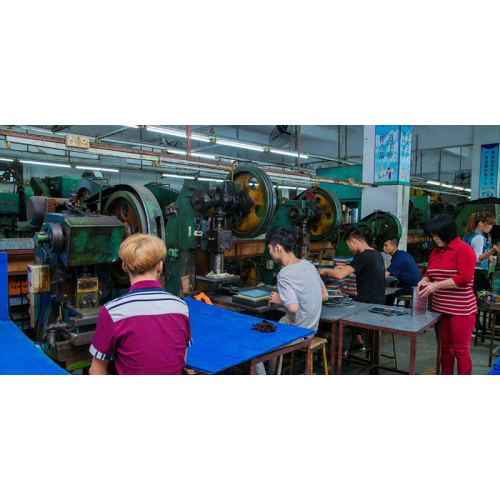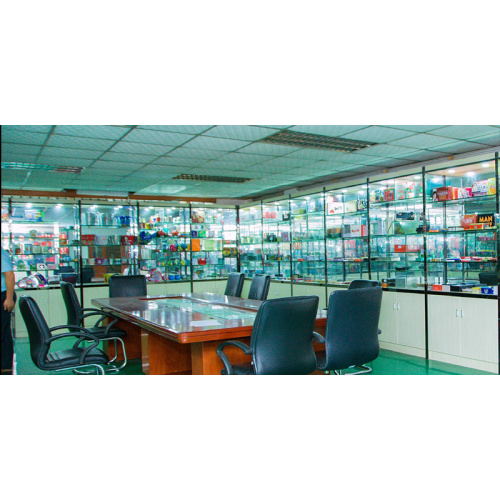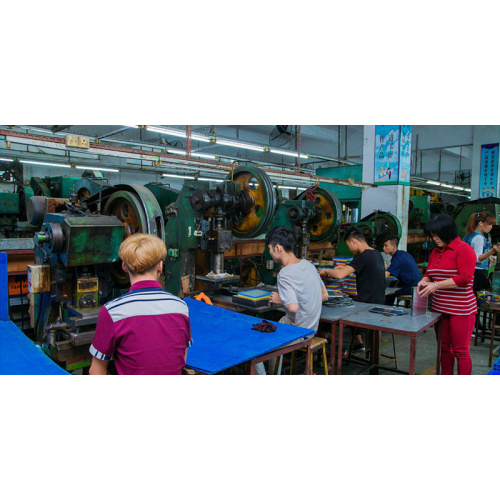Third, metal packaging screen printing quality characteristics and requirements
Metal packaging screen printing, from its technical point of view, the printed pattern, lines must be clear, full ink, which is related to the choice of silk screen mesh, stretching tension, printing pressure, printing speed, ink viscosity and a series of Print data.
1, carefully choose the screen according to the printed characters, lines determine the screen, generally use 300 ~ 350 mesh screen. Using a screen with more than 350 mesh, although a good printing effect can be obtained, due to the ink layer being too thin, the corrosion resistance of the diamond plate may not be strong in the subsequent processes. The selected wire mesh is tensioned under 8 tensions, and the glued net frame and the plastic surface are inversely stretched by being laid upside down on the stretched screen surface. The purpose is to stretch several meshes at the same time and save the mesh. The frame can also be discharged at any angle, avoiding right-angle stretch nets and reducing the odds of jagging during printing.
2, stretch nets in the printing of general graphics, you can completely use hand-stitched network, both to save money, but also labor. For printing more complex or detailed graphics, the web tension first affects the printing accuracy, the tension is too small, and the consequences are almost always unclear. Therefore, mechanical or pneumatic stretch nets must be used. When stretching the net, the tension of the net must be gradually increased. The required tension cannot be pulled once. The mesh should be leveled evenly. When the tension is reached, it should be held for a few minutes before sticking to the web, and then glued. Stretch a good network is best to stand for 3 to 4 days, flat on the desktop or other places not easy to touch, until the tension can be used evenly.
3, screen degreasing treatment with flowing water wet screen, with detergent or detergent coated on both sides of the screen, with a brush scrub, both to achieve the purpose of de-referring, but also coarse wire mesh. Alkaline detergent on the net must be flushed under running water, otherwise it will affect the quality of the plate.
4. Drying Place the washed wire mesh in a dry and ventilated place or dry it in an oven. The drying degree should not be too high, so as not to affect the screen deformation.
5, plate-making due to screen printing requirements of the pattern, the characters are clear. Full ink, which requires the production of high-quality screen. First of all, two situations should be excluded: The first is that the photosensitive film is too thin, the printed pattern, lines are not only unclear, but also serrated, line sprinkled, rounded corners blunt; the second is the photosensitive film is too thick, despite the printing When a lot of pressure was added, the ink layer was still very thin and the lines were severely broken and could not withstand the corrosion of potions. Therefore, the thickness of the photosensitive film on the 350-mesh screen is preferably ideal for the 224-squeegee method. Among them, the speed of squeegee and the inclination of the squeegee are also major factors affecting the film thickness. Squeegee speed can not be fast, slowly move the scraper, not only can eliminate the bubbles in the glue, but also to obtain a uniform photosensitive layer, scraper back and the angle between the screen is 25 °, when the scraping glue both hands to be even.
It is worth mentioning that the precision of the printing process using photo-sensitive adhesive plates is not as high as that of the capillary film, but the film resistance of the film is not as good as that of the photo-resist. So immediately after the application of photoresist, a polyester film is applied to the non-printing surface, scraped twice with a scraper, and bubbles are removed to prevent the occurrence of pinholes; then placed in an oven and dried at a low temperature, the temperature is controlled at 40°C. Inside; drying, remove the silk screen to remove the polyester film, and then dry it for 1 to 2 minutes to expose. This method of "changing" a film film with a photosensitive adhesive can improve screen printing accuracy.
6, the exposure of the majority of the sun exposure. According to the photosensitizer content exposure 30 ~ 45 seconds, the exposure should be repaired before the film, dust and stains. If the screen is facing up and the frame is down, a black or blue copy paper should be placed between the pad and the screen to prevent the light from refracting, resulting in unclear patterns or difficult to develop.
7, the development of the exposure should be immediately put into the development, with 30 °C warm water soaked screen 1 ~ 2 minutes until the unexposed film was swollen with tap water until the pattern is all clear.
8, dry with a sponge to remove excess moisture, placed in ventilated sunlight to dry naturally or in a drying oven at 40 °C.
9. Revised version and proofreading of nets and negatives, closed mesh outside the pattern and drying, can be delivered to the printing process.
10. Printing adopts self-drying corrosion-resistant printing ink, keeping the distance between the screen plate and the surface of the metal package from 3 to 4 mm; the blade is required to be sharp, straight, and not to be nicked, and the ink is scraped from front to back. Scraper tilted 45 ° angle, parallel, not too fast to scrape ink. Try printing about 10 times, if the amount of ink is normal, the pattern is clear, you can print in batches. In order to reduce the workload of the patched version, it is best to check the print quality every time it is printed 10 times in order to promptly correct it. Due to the dryness of the environment and the serious dust, white spots and lines appear on the printing plate, which is mainly caused by dust sticking on the web and particles in the ink. Apply an appropriate amount of thinner to the dirt. After printing, the screen should be cleaned in time. Propionic acid cleaning fluid is generally preferred. When the skin is stimulated, the ink sticking to the web is easy to wash. Cleaned screens should be packaged in a timely manner and properly placed for reuse.
11. Inspection of printed parts The printed parts cannot be directly corroded. After the ink is completely dry, the defects in the printing are carefully and overhauled; the parts to be filled are repaired with a plate-making glue, and the unclear stylus is used. Modify; to do self-examination, mutual investigation, special investigation, minimal control of print quality deficiencies, and then can only be transferred to the next process.
12, rational selection of ink multi-color layered overprint, to wait until the previous color can not afford to stick to the next color printing, once the color is printed and damaged, do not rub the background dirty. In order to ensure the finished product rate and reduce the difficulty of repairing, the ink type and the diluent are selected.
When the metal package surface color is light, UV ink can be used to add resin ink color to ensure uniform color. After the printing is cured with ultraviolet light, the color ink particles will be firmly embedded due to the curing of the UV ink, the surface will not stick, and the color will be printed immediately. The next color ink can use thermosetting metal ink, after printing heat curing. Not only can you get the ideal combination of strength and hardness, but you can also get an unexpected pearl-like background color. The general solvent will not be wiped off, and it is easy to repair.
13. Pre-printing scheme and printing sequence should be tested with a piece of sticky copperplate paper. Check if there is any lack of graphics, if the scraping edge is straight, whether the net distance is appropriate, and whether the ink is even, try 2~3. Times, after the network to eat ink evenly after the official printing. When printing, continuous graphics can be scraped and printed with a large scraper. For separate graphics, small scrapers of various sizes can be used for partial printing. All the nets are printed after finishing printing. A small area is easy to obtain a flat surface. The fullness of the printed text will not appear in different shades.
14. The cleaning of the screen is very important. Some residual traces of ink in the graphic text, especially the repetitive use of the screen frame, can cause blind mask holes. The degree of reproduction of the graphic text is affected, that is, printing defects. Use the following methods to clean the screen.
(1) Wipe the net with the ink cleaning agent, the ink is clean but the taste is large.
(2) Wipe the net with banana water, taste small, large amount of cotton yarn.
(3) Wipe the web with cotton and rubbing the ink. The ink leaves the web in a stripped state and is then wiped with an ink cleaner. This method is convenient and efficient.
In short, from the design to the film production, from screen preparation to screen printing, from ink selection to printing, the best possible process conditions are selected for each link.
Source: Chenyi Online









